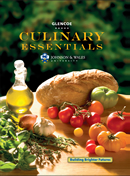
Culinary Essentials ©2010Chapter 3: Foodservice Career OptionsCheck Your Answers: After You ReadSection 3.1Review Key Concepts1. The traditional kitchen brigade includes: sous chef; chefs de partie/line chefs; saucier/sauce cooks; poissonier/fish cooks; grillardin/grill cooks; friturier/fry cooks; rotisseur/roast cook; entremetier/vegetable cook; potager/soup cook; tournant/swing cook; garde manger/pantry chef; patissier/pastry chef; and boucher/butcher.2. You can prepare for a career in the foodservice industry through high school culinary arts classes, certification programs, associate's degree programs, bachelor's degree programs, entry-level jobs, apprenticeships, corporate training programs, military training programs, and on-the-job training programs. Practice Culinary Academics3. English Language Arts Display an understanding of which interpersonal and technical skills are required to do the jobs described in the section, as well as the education level that might be required for each job. Ads should fit the style of a recruiter looking to hire employees.4. Social Studies Discover some general information about historical and modern kitchen brigades through research. Escoffier was in the French army before working as a chef at the Savoy Hotel, where he developed the brigade system. He based his system on his experiences in the military for maximum efficiency. Over time, the kitchen brigade has been simplified in many restaurants, with fewer hierarchies of chefs who are trained to do many different tasks. 5. Mathematics No. The required number of hours/year is 240 × 8 = 1,920 hours. However, you will work only 120 × 12 = 1,440 hours so will fall 480 hours short (1,920 − 1,440 = 480). Section 3.2Review Key Concepts1. As the number of single and single-parent households increase, parents will increasingly look to outside sources for help with meals. In addition, children are spending more money outside the home on food, which creates trends focused on children's preferences.2. Hotels and resorts offer traditional foodservice positions such as chefs, servers, caterers, and management, and can also offer special opportunities such as dietitians. Practice Culinary Academics3. Social Studies Presentations should show important events in restaurant development, starting with its invention. Photos should show examples of the chosen restaurant type.4. Science Create survey questions that will draw out information about how teenagers eat and where they would like to eat. Your sample size should be large enough to give meaningful information. From the answers you get, design a plan for a restaurant to be opened near the school. 5. Mathematics $1,750 − $1,000 = $750. $750 ÷ $1,000 = 0.75. 0.75 × 100 = 75%. Section 3.3Review Key Concepts1. Entrepreneurs who want to work in foodservice management can become chef-consultants and advise corporations in opening or marketing their restaurants, or become an employee recruiter to staff restaurants.2. The components of a business plan include an executive summary, a management team plan, a company description, a product and service plan, vision and mission statements, industry overview, a market analysis, a competitive analysis, a marketing analysis, an operational plan, a financial plan, a growth plan, a contingency plan, and a cover page, title page, table of contents, and supporting documents. Practice Culinary Academics3. Social Studies Answers should note that the demand for a particular type of foodservice business will determine that business's success. A new business may be able to supply the demand. If demand is strong enough, there may be room for more than one business.4. English Language Arts Business plans should contain basic elements of a business plan. They should be written in a style that is appropriate to present to potential lenders and investors, and should contain correct grammar, spelling, and punctuation. It should be apparent in the content that thought and consideration were put into the plan as if it were to represent a real business. 5. Mathematics $5 − $4 = $1 profit per cupcake. $1 ÷ $5 = 0.2. 0.2 × 100 = 20% profit margin. |  |















